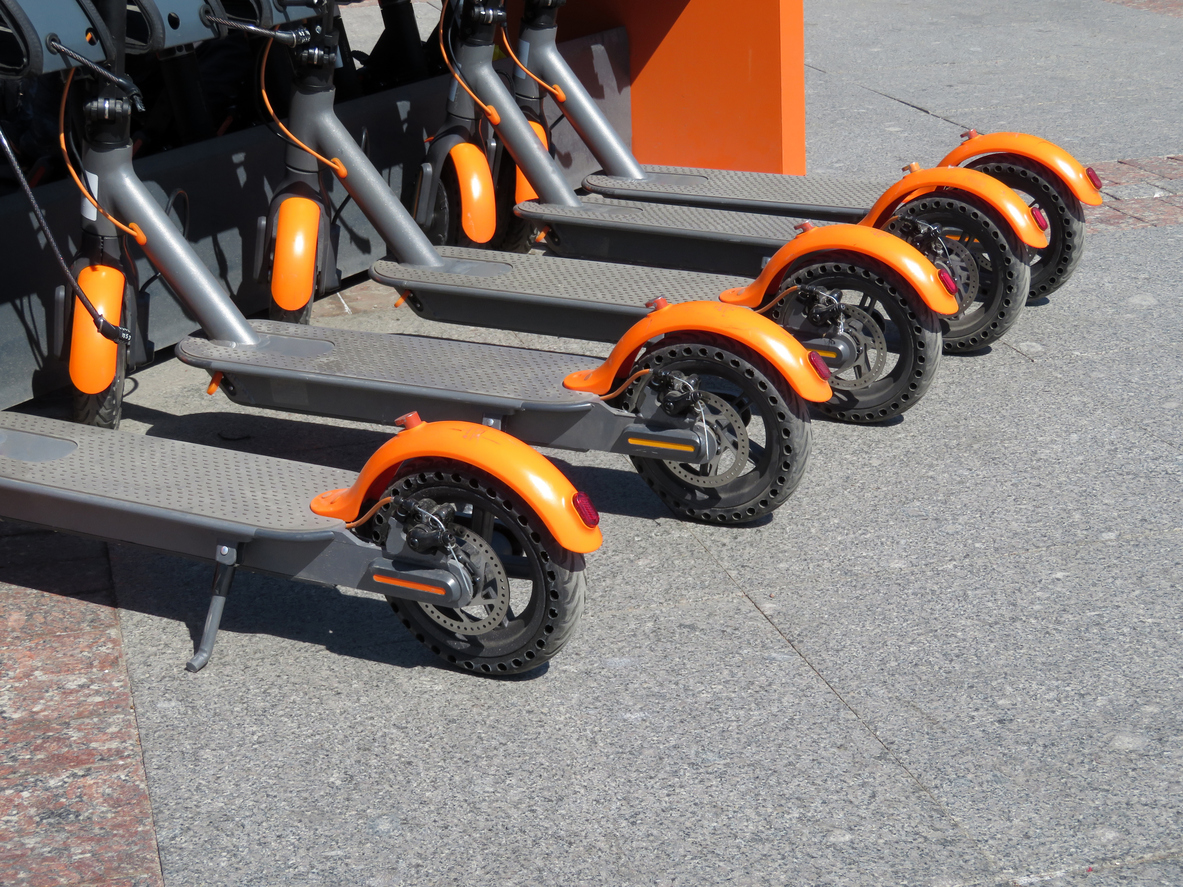E-Scooter Etiquette

In your own city, or on your travels, you’ve likely seen people riding around town on electric scooters. With less of a carbon footprint than riding in a car, requiring less physical energy than biking or walking, and costing relatively little money, e-scooters are quickly becoming a popular mode of communication. Love them or hate them, it seems like they are here to stay. But what are the rules around using one? Here are some commonly asked questions and e-scooter etiquette tips to keep you safe and courteous on the go.

How Does It Work?
Electric scooters are generally dockless, pay-by-the-minute transportation devices outfitted with wireless connectivity and GPS. Most top out at around 15 mph and have a range of about 15 miles. The companies providing these services generally operate through apps on your phone. Simply download the app, enter your information and follow the instructions to find, unlock, ride and pay for your e-scooter ride. Almost all e-scooter companies provide a tutorial for operation in the app.
Is a Helmet Required?
Most licensed operators have a helmet requirement in their user agreement. Some companies give you the option to buy one directly from them. BYOH for your safety.
Where are E-scooters Allowed to Travel?
For the most part, e-scooters are allowed on sidewalks where bicycles travel. If the speed limit is less than 35 mph, people using e-scooters are encouraged to use designated bike lanes on streets. Do not ride in the bus lane, as there is often a designated transit lane for cyclists. However, this varies greatly by location. Be sure to check with your local Department of Transportation to ensure you’re following the rules appropriately.
For example, in Austin, Texas, there are restricted sidewalks in the downtown area that you may not use a scooter on, as well as a restriction on motorized vehicles in parks. Austin residents can check out their e-scooter rules here.
What Side of the Street Should an E-scooter Travel?
Travel with traffic and use your bike signals to alert others of your intentions.When driving an e-scooter on the road, you must obey traffic signals, signs and other traffic-control devices applicable to vehicles. Stop at stop signs and don’t jump in front of people, cars or in oncoming traffic.
Does Courtesy Count?
Always. Show fellow pedestrians and cyclists you are aware of their presence by making eye contact and offering a friendly smile. As with any mode of transportation, a little bit of courtesy towards your fellow commuters certainly can go a long way.
Where Can You Leave Your E-scooter When You Are Finished Using it?
You can leave e-scooters:
- On the hard surface of a sidewalk – so long as there are at least 3 feet of clearance for pedestrian access on the sidewalk
- At public bike racks
- Further designated areas by geofencing, parking boxes or another determined method, as designated by your local department of transportation
You cannot leave scooters within or immediately adjacent to:
- Curb ramps, railings and signal push buttons
- Sidewalk cafes or patios
- Bus stops, passenger waiting areas, and loading zones
- Disabled parking zone
- Street furniture that requires parking access (for example, benches, pay stations)
- Driveways, alley or curb cuts
To ensure that you are not impeding the flow of traffic or blocking a business/residence, follow the guidelines on where to leave your scooter. Improper placement of scooters can lead to a host of other problems for the city you live in, so be considerate when parking.
Check your local Department of Transportation as rules may vary from city to city. Safe travels!
You may also like Travel Etiquette: Best Travel Apps for Your Next Trip. For more of Diane’s etiquette tips read her posts on Inc., subscribe to her articles on HuffPost, “like” The Protocol School of Texas on Facebook, and follow her on Pinterest, Instagram, and Twitter. Buy her new book, Modern Etiquette for a Better Life.






